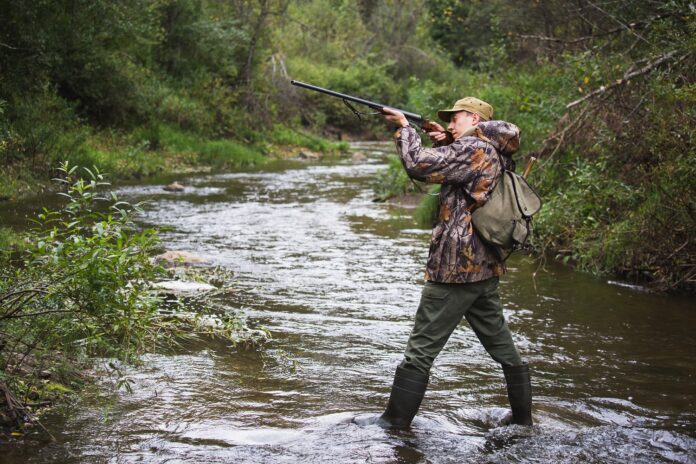Turkey hunting is a thrilling experience that requires a mix of patience, strategy, and skill. Understanding these intelligent birds’ behavior and preparing with the right gear and tactics are essential for a successful hunt. Not only does turkey hunting require a deep knowledge of the land, but it also calls for adapting to changing conditions and fine-tuning your techniques as you go. Turkey hunting involves early mornings, often before dawn, to set up and blend into the landscape unnoticed.
Additionally, the anticipation and challenge of calling in a gobbler during the spring season can make each hunt a memorable adventure. Here, we explore five core topics to help you prepare for a productive turkey hunting season, covering everything from essential gear to mastering the art of turkey calling.
Turkey Behavior and Timing
Understanding turkey behavior is fundamental to successful hunting. Turkeys are keenly aware of their surroundings and have an excellent sense of sight. They’re most active in the morning and late afternoon, especially during the spring mating season when male turkeys, or toms, are searching for mates. Toms are particularly vocal during this time, responding to calls as they search for hens. Knowing this, spring turkey hunting is the perfect opportunity to use calls to attract toms into range. Scout areas beforehand, looking for signs like scratch marks, droppings, and feathers to identify turkey activity zones. Observing their daily patterns can help you locate feeding areas, roosting spots, and travel routes.
Selecting the Right Gear for Success
Having the proper equipment enhances the turkey hunting experience and improves your chances of success. A shotgun is typically the preferred weapon for turkey hunting, with 12-gauge and 20-gauge shotguns being the most popular choices. A shorter barrel shotgun provides better maneuverability, especially in wooded areas, while a tight choke tube ensures a tighter shot pattern at medium ranges. In addition to your weapon, camouflage is crucial. Turkeys have sharp eyesight and can easily spot any unnatural movement. Invest in high-quality camouflage clothing that matches the colors of your hunting area, and don’t forget to cover your hands and face to minimize visibility. Turkey calls are another essential piece of gear, allowing hunters to mimic turkey vocalizations. Experiment with different types, like box calls or slate calls, to find what works best for you.
Mastering the Art of Calling Turkeys
Calling is one of the most effective techniques for attracting turkeys. As toms respond to hen calls, understanding the different sounds and when to use them can make or break your hunt. Basic calls like clucks, yelps, and purrs are easy to learn and effective in luring turkeys within shooting range. However, mastering advanced calls, such as cackles and gobbles, can take practice and significantly enhance your success. Rhythm and timing are just as important as the sounds themselves, as a natural cadence can increase your success rate by creating a realistic interaction.
Turkeys use calls not only during mating season but also as part of their regular communication, making it essential to learn these sounds and when to deploy them. Listening to live turkey sounds or practicing with an experienced hunter can help you refine your technique and understand the nuances of turkey communication. The more accurately you can mimic a hen’s vocalizations, the more likely you are to bring in curious toms looking for a mate or challenging a rival.
Planning Your Hunt for the Best Results
Preparation is essential for a successful hunt. Scout your hunting grounds several days before the season to identify roosting trees, feeding areas, and strutting zones, as turkeys are creatures of habit and tend to follow predictable patterns within their environment. When scouting, look for signs of turkey activity, such as tracks, feathers, and scratch marks on the ground, which indicate feeding sites or frequent travel routes. For Spring turkey hunting Texas, take note of regional details, like preferred roosting trees and feeding areas that attract local turkey populations. Create a mental map or mark these locations on a physical map so you know where to set up on hunting day. Position yourself near feeding or travel zones to increase your chances, but avoid positioning too close to roosting trees to prevent scaring the turkeys away.
Timing is also crucial for a successful hunt, as turkeys are most active in the early morning hours when they descend from their roosts. Arriving at your chosen spot before sunrise gives you a better opportunity to intercept turkeys as they move from their roosts to feeding areas, allowing you to get set up quietly and without detection.
Safety and Ethical Hunting Practices
Safety should always be a priority. Wear orange when moving to and from your hunting location to alert other hunters of your presence. When calling or using decoys, position them carefully to avoid attracting attention from other hunters who may mistake them for real turkeys. Ensure you know your surroundings and avoid areas where other hunters might be present. Ethical hunting practices are equally important.
Always make clean, humane shots and follow the regulations regarding bag limits and hunting seasons. Respect other hunters’ space, and remember that wildlife preservation is key to sustainable hunting. Practicing safety and ethics not only ensures a positive experience but also helps preserve turkey populations for future seasons.
